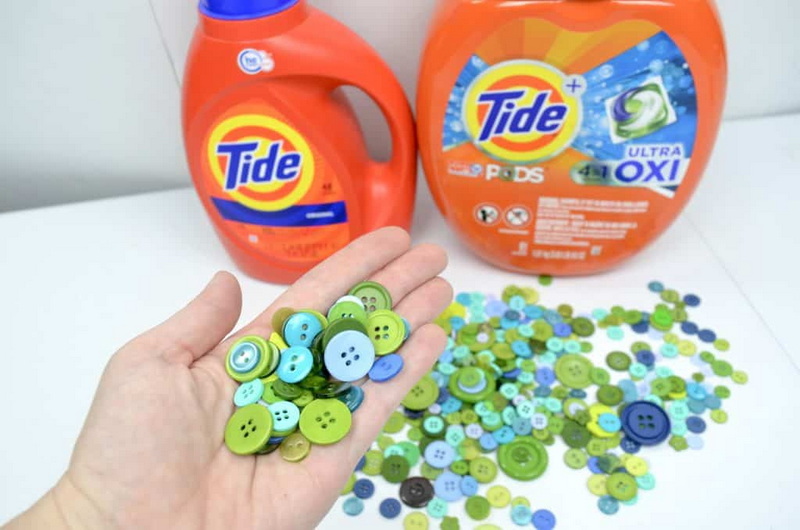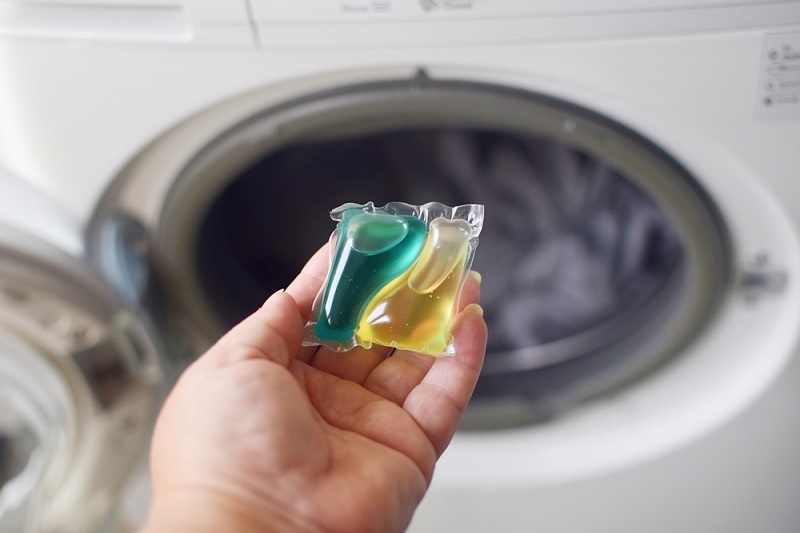Dongguan UFine Daily Chemical Co.,Ltd.
- All
- Product Name
- Product Keyword
- Product Model
- Product Summary
- Product Description
- Multi Field Search
Views: 222 Author: Tomorrow Publish Time: 11-13-2025 Origin: Site











Content Menu
● What Are Laundry Pods Made Of?
● Emergency Response Considerations
● Risk Reduction and Prevention
● Regulatory and Industry Perspectives
● Long-Term Trends and Implications
● Understanding Behavioral Factors Behind Ingestion
● FAQ
>> 1. What should I do if a child swallows a laundry pod?
>> 2. Can laundry pods cause chemical burns?
>> 3. Are laundry pods dangerous for pets?
>> 4. Is it safe to crush a laundry pod to speed up cleaning?
>> 5. How can households reduce the risk of pod ingestion?
Laundry pods have become a widely discussed topic in households around the world. These small, colorful capsules, designed to dispense detergent in washing machines, resemble candy to curious eyes, especially for children. The visual similarity, coupled with bright packaging and enticing shapes, has raised concerns about accidental ingestion and intentional misuse. This article examines the potential dangers of eating laundry pods, the factors that influence risk, and practical steps to reduce harm.

Laundry pods are engineered to release concentrated cleaning agents when used as directed in a washing machine. However, this purpose often conflicts with human curiosity, particularly among children and teenagers who may perceive pods as edible due to their appearance or packaging. The central question is not merely whether laundry pods are toxic, but how the risk manifests in real-world scenarios, what symptoms might follow ingestion, and how to respond effectively.
Laundry pods typically contain a combination of surfactants, enzymes, dyes, fragrances, and stabilizers encased in a flexible, water-soluble membrane. When ruptured, the contents mix with water to create a cleaning solution. The exact formulation varies by brand, but common ingredients include:
- Anionic and nonionic surfactants
- Builders and enzymes
- Fragrances and colorants
- Chelating agents and preservatives
Safety profiles depend on concentration, contact with mucous membranes, and the presence of multiple ingredients. The membrane itself is designed to dissolve in water but can remain intact if punctured, leaking concentrated contents that are more hazardous than diluted household detergents.
Ingestion is the primary pathway of danger, but other exposure routes can cause harm as well:
- Oral ingestion: Swallowing the contents can irritate the mouth, throat, and stomach, potentially causing vomiting, coughing, drooling, abdominal pain, and dehydration.
- Eye contact: Splashes can cause serious eye irritation or chemical burns.
- Skin contact: Prolonged exposure may lead to irritation or dermatitis.
- Inhalation: Vapors are less likely to cause systemic harm but can irritate the respiratory tract if a pod is crushed or released in a confined space.
Children and adolescents are especially vulnerable due to smaller body size, curiosity, and a tendency to explore household products. Pets can also be at risk if pods are accessible.
The severity of symptoms depends on the amount ingested, the specific ingredients, and the individual's age and health status. Potential signs of exposure include:
- Mouth and throat irritation: Burning sensation, drooling, swollen lips
- Gastrointestinal symptoms: Nausea, vomiting, abdominal pain, diarrhea
- Respiratory issues: Coughing, wheezing, difficulty swallowing if aspiration occurs
- Severe reactions: In rare cases, lethargy, confusion, or changes in consciousness may indicate a need for urgent medical evaluation
There have been reports of intentional ingestion among adolescents trying to mimic viral internet challenges, which greatly increases risk of severe harm. Emergency services have noted cases requiring hospitalization due to complications like airway obstruction or chemical pneumonitis caused by aspiration.
- Do not induce vomiting unless advised by a medical professional or poison control center.
- If ingestion occurs, rinse the mouth with water and seek immediate medical advice, especially for children under five or if a large amount was swallowed.
- If there is coughing, choking, or difficulty breathing, call emergency services promptly.
- For eye exposure, rinse eyes with clean water for at least 15 minutes and seek medical care.
- Save the product packaging to provide clinicians with ingredient information.
Awareness of these guidelines among caregivers and healthcare providers can improve outcomes by ensuring timely and appropriate intervention.
Prevention is more effective than treatment. Key strategies include:
- Childproof storage: Keep laundry pods in high, locked cabinets out of reach of children. Use original packaging with tamper-evident seals.
- Clear labeling and education: Teach family members about the dangers of ingesting or misusing cleaning products.
- Proper usage: Only place pods directly into washing machines as directed; never crush or dissolve pods in water outside of laundering.
- Packaging design: Some brands explore opaque or deterrent packaging to reduce appeal to children; support and advocate for safety-focused packaging improvements.
- Community awareness: Share information about the risks of laundry pods in communities, schools, and child-care settings.

Regulatory bodies in various regions have issued guidelines to improve product safety. These guidelines often emphasize:
- Clear warnings on packaging and accompanying instructions
- Child-resistant packaging or barriers to access
- Public education campaigns highlighting the dangers of ingestion
- Post-market surveillance to monitor adverse events and respond quickly
Ethical considerations also arise in marketing and product design. Brands face responsibility to minimize risk, particularly for products intended for home use where children are present. Collaboration between manufacturers, policymakers, healthcare professionals, and consumer groups can enhance overall safety.
Over time, several trends may influence how laundry pods are perceived and regulated:
- Safer formulations: Development of milder surfactants and reduced toxicity without compromising cleaning efficacy.
- Packaging innovations: Tamper-resistant, child-resistant packaging that remains user-friendly for adults.
- Improved labeling: More intuitive icons and multilingual warnings to accommodate diverse households.
- Education initiatives: Widespread public health campaigns that inform caregivers about safe storage and handling.
Increased adoption of these measures can significantly reduce accidental exposures and severe reactions, protecting vulnerable populations.
The reasons some individuals, especially teenagers, intentionally ingest laundry pods merit attention. Social media trends and peer pressure have contributed to risky behaviors. Educational interventions aimed at addressing these underlying motivations are critical to reducing harm beyond simple prevention.
Parents, teachers, and healthcare providers should engage youth in conversations regarding social media influences and the real dangers involved. Positive reinforcement of safe behaviors and open communication can deter experimentation with dangerous substances.
Eating laundry pods poses real health risks, particularly for young children and vulnerable populations. While severe outcomes are not universal, ingestion can cause significant irritation and potential systemic effects depending on the quantity and ingredients involved. Prevention hinges on secure storage, clear labeling, responsible usage, and public education. If ingestion occurs, seek prompt medical advice and avoid self-treatment strategies that could worsen the situation. Continued industry innovation and regulatory vigilance are necessary to further reduce risk and protect public health.

If a child swallows a pod, call your local poison control center or emergency services immediately. Do not induce vomiting unless instructed by a professional. Provide packaging information to responders and monitor the child closely for breathing or swallowing difficulties.
Yes, exposure to concentrated cleaning agents from ruptured pods can cause chemical burns in the mouth, throat, or eyes. Rinse affected areas with water and seek medical care if symptoms persist or worsen.
Pet exposure can also be hazardous. If a pet ingests a pod, contact a veterinarian or poison control center promptly and monitor for signs of distress such as vomiting, drooling, or lethargy.
No. Crushing or dissolving pods outside of the washing machine increases the risk of skin, eye, or airway exposure and should be avoided.
Store pods out of reach in locked, childproof cabinets; keep them in their original packaging with warnings; educate household members about safety; and follow manufacturer instructions exactly for usage and disposal.